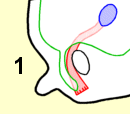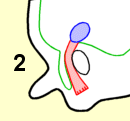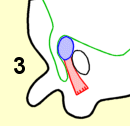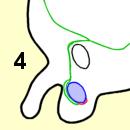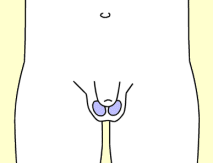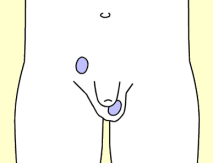|
Physical Problems in Males
|
|
Undescended Testicles
Medical term: Cryptorchidism (gr. kryptos: “hidden” + orchis: “testicle”)
|
|
|
|
|
|
|
|
|
|
|
|
|
As the fetus grows inside the womb, his testicles gradually descend into the developing scrotal sac. Shown here is a testicle (blue) descending with the help of a guiding cord (red) into the scrotum. 1 second month
2 third month
3 seventh month
4 at birth
|
|
|
|
|
|
As a male fetus grows inside his mother's womb, his testicles form inside his abdomen and then, shortly before birth, descend into the scrotum. However, in some cases, this fails to happen and the infant boy is born with still undescended testicles. The condition is found in about 4% of newborn boys and in about 30% of boys born prematurely. It is also possible that only one of the two testicles fails to descend. In some rare cases, a testicle that has already descended into the scrotum moves up again into the groin area (a so-called retractile testicle). Usually, the doctor can simply retract it from there.
In most cases, undescended testicles move down into the scrotal sac on their own within the first few months. However, if this does not happen, treatment becomes necessary, because inside the abdomen the testicles are exposed to normal body temperature which is too high for normal sperm production. This could lead to infertility. There is also some danger of a hernia or even a tumor developing.
|
|
|
|
Infant boys: (left) Both testicles have descended into the scrotum.
(right) One testicle has not descended but has remained inside the abdomen.
|
Treatment
The usual treatment of undescended testicles is surgery. It should be performed as soon as possible, i.e. between the 3rd and 18th month after birth. This offers the best chance of avoiding later infertility. Males born with and treated for undescended testicles should be told about it when they reach puberty, and they should learn how to do a regular self-exam of their testicles in order to detect any lumps and thus possible early signs of testicluar cancer. Such self-exams are actually recommened for all males (see Testicular self-examination). For adult males, it is usually too late to move undescended testicles into the scrotum and thus to restore fertility. Instead, the testicles may simply be surgically removed. As a rule, men over 40 no longer receive any treatment for this condition at all.
|


